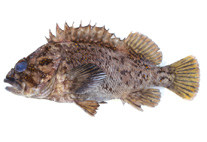Abstract
Tadpoles in the superfamily Dendrobatoidea (families Aromobatidae and Dendrobatidae), housed in zoological collections or illustrated in publications, were studied. For the most part, tadpoles of species within the family Aromobatidae, the subfamilies Colostethinae and Hyloxalinae (of the family Dendrobatidae), and those of the genus Phyllobates, Dendrobatinae (Dendrobatidae) have slender anterior jaw sheaths with a medial notch and slender lateral processes, triangular fleshy projections on the inner margin of the nostrils and digestive tube with constant diameter and color and its axis sinistrally directed, concealing the liver and other organs. These morphologies are different from the ones observed in tadpoles of species included in the Dendrobatinae (minus Phyllobates). Exceptions to these morphological arrangements are noted, being the digestive system arrangement and the nostril ornamentation more plastic than the shape of the upper jaw sheath. Tadpoles of all species of the Dendrobatoidea have similar disposition of digestive organs in early stages, but differentiate in late stages of development. Classifying the upper jaw sheath into the two recognized states is possible from very early stages of development, but gut disposition and nostril ornamentation cannot be determined until late in development, making classification and taxonomic assignment of tadpoles based on these morphological features challenging.

